Wednesday, March 18, 2015
Gas poisoning What is Gas Poisoning
Among these poisonous gases, are mineral acids, ammonia, cyanides and mercury.
Other types of poisonous gases are specially manufactured for war purposes.
Poisonous gases affect the body in various ways, and many are potentially fatal.
Gas poisoning symptoms
Carbon Monoxide Poisoning
Carbon monoxide, and mixtures that contain it, prevent the blood from carrying oxygen to tissues;Hydrogen Sulfide Poisoning
Hydrogen sulfide causes respiratory paralysis;Carbon Tetrachloride Poisoning
Carbon tetrachloride damages the liver and kidneys;Carbon Disulfide Poisoning
Carbon disulfide produces nerve damage and ultimately causes paralysis and psychoses;Tear Gases Poisoning
Tear gases such as xylyl bromide, severely irritate the eyes, nose, and throat;Nerve Gases Poisoning
Various nerve gases prevent the proper functioning of nerve impulses;Chlorine and Phosgene Poisoning
lung irritant gases, such as chlorine and phosgene, attack the eyes, nose, throat, and lungs;Vesicant gases Poisoning
Vesicant gases, such as mustard gas and lewisite gas (containing arsenic), cause blisters and ulcers on the skin;Nauseant gases Poisoning
Nauseant gases, such as chloropicrin, induce vomiting;Nose irritant gases Poisoning
Nose irritant gases, such as diphenylchlorarsine, cause pain, sneezing, depression, and sometimes vomiting.How do people come in contact with poisonous gases?
- Carbon monoxide is the most poisonous gas likely to be present in domestic surroundings. For example, when an automobile engine has been left running in an enclosed space, such as a garage, carbon monoxide can accumulate to toxic levels.
- Carbon tetrachloride is used in dry cleaning.
- Hydrogen sulfide is a poisonous gas produced in some chemical processes.
- Tear gases are used by police and military personnel.
- Carbon disulfide is used in the rubber industry and in making rayon.
Sphinx Greek Mythology
Transplanted into Greece, this sublime and mysterious Egyptian deity degenerates into an insignificant, and yet malignant power, and though she also deals in mysteries, they are, as we shall see, of a totally different character, and altogether inimical to human life.
The Sphinx is represented, according to Greek genealogy, as the offspring of Typhon and Echidna. Hera, being upon one occasion displeased with the Thebans, sent them this awful monster, as a punishment for their offences. Taking her seat on a rocky eminence near the city of Thebes, commanding a pass which the Thebans were compelled to traverse in their usual way of business, she propounded to all comers a riddle, and if they failed to solve it, she tore them in pieces.
 |
| The Sphinx |
During the reign of King Creon, so many people had fallen a sacrifice to this monster, that he determined to use every effort to rid the country of so terrible a scourge. On consulting the oracle of Delphi, he was informed that the only way to destroy the Sphinx was to solve one of her riddles, when she would immediately precipitate herself from the rock on which she was seated.
Creon, accordingly, made a public declaration to the effect, that whoever could give the true interpretation of a riddle propounded by the monster, should obtain the crown, and the hand of his sister Jocaste. Œdipus offered himself as a candidate, and proceeding to the spot where she kept guard, received from her the following riddle for solution: "What creature goes in the morning on four legs, at noon on two, and in the evening on three?" Œdipus replied, that it must be man, who during his infancy creeps on all fours, in his prime walks erect on two legs, and when old age has enfeebled his powers, calls a staff to his assistance, and thus has, as it were, three legs.
The Sphinx no sooner heard this reply, which was the correct solution of her riddle, than she flung herself over the precipice, and perished in the abyss below.
The Greek Sphinx may be recognized by having wings and by being of smaller dimensions than the Egyptian Sphinx.
Text:
Myths and Legends of Ancient Greece and Rome
Author: E.M. Berens
Published: 1880
The Project Gutenberg EBook
Produced by Alicia Williams, Keith Edkins and the Online
Distributed Proofreading Team at http://www.pgdp.net
What is Attention Deficit Disorder Definition
These disorders are occasionally a result of environmental stress.
Most cases, however, are felt to have a biological basis.
Attention deficit disorders should be differentiated from mental retardation, schizophrenia, or a manic-depressive state.
The onset is before the age of 7 years, and an estimated 5 percent of school-aged children exhibit characteristics of some form of learning disorder.
I.Q. tests taken by these children are normal, and there are no neurologic abnormalities.
Attention deficit disorders may result in poor school performance.
In some cases, there are specific learning disabilities, such as visual-motor or speech defects.
Attention Deficit Disorder Treatment
Treatment of Attention Deficit Disorder is complex and should be coordinated with specific educators. There is no proof that dietary changes are beneficial.LYRICS SO DEEP 4
LYRICS SO DEEP 5
They threw the locks onto the ground
And with glasses high we raised a cry for freedom had arrived
On the day the wall came down
The Ship of Fools had finally run aground
Promises lit up the night like paper doves in flight
I dreamed you had left my side
No warmth, not even pride remained
And even though you needed me
It was clear that I could not do a thing for you
Now life devalues day by day
As friends and neighbors turn away
And theres a change that, even with regret, cannot be undone
Now frontiers shift like desert sands
While nations wash their bloodied hands
Of loyalty, of history, in shades of grey
I woke to the sound of drums
The music played, the morning sun streamed in
I turned and I looked at you
And all but the bitter residues slipped away... slipped away
INFORMATION ABOUT THE SUN FOR KIDS
- Sunlight is so strong that it can damage your eyesight and even blind you.
- Never look directly at the sun through a telescope, binoculars, or sunglasses.
Did you know that the sun is really a star?
It looks much larger than the stars we see in the sky at night. Although many of those stars are even larger than the sun, they look smaller because they are even farther away from the earth.
All stars produce huge amounts of energy. Each star is like a powerhouse of energy. In one second, the sun, for example, produces 4 million short tons (3.6 million metric tons) of energy. Without the sun’s energy there would be no life on earth. The earth would be completely dark and freezing cold.

Heat energy travels from the core of the sun to its surface. Energy is released from the sun’s surface as electromagnetic radiation.
WHAT IS THE SUN MADE OF?
The sun is a huge ball of hot substances. The hottest part is in the center, or core. Here, the fierce heat causes atoms of hydrogen to join together in the process called nuclear fusion. During nuclear fusion, huge amounts of energy are released. This energy flows outwards from the core to the surface of the sun.The surface of the sun is like a sea of continually exploding gases and boiling liquids. Much of the sun’s energy is heat and light, and this travels out, or radiates, in all directions. The sun is the source of almost all the energy we use.
A fountain of gas flares up from the surface of the sun, reaching as far as 992,000 miles (1,600,000 kilometers) into space.
Will the sun burn itself out?
If the sun is producing so much heat and light, why doesn’t it burn itself out like a coal fire or a match? The answer is that it will burn itself out, one day. It will swell up into a giant red star and use up the rest of its fuel. But don’t worry—that day is about 5 billion years away!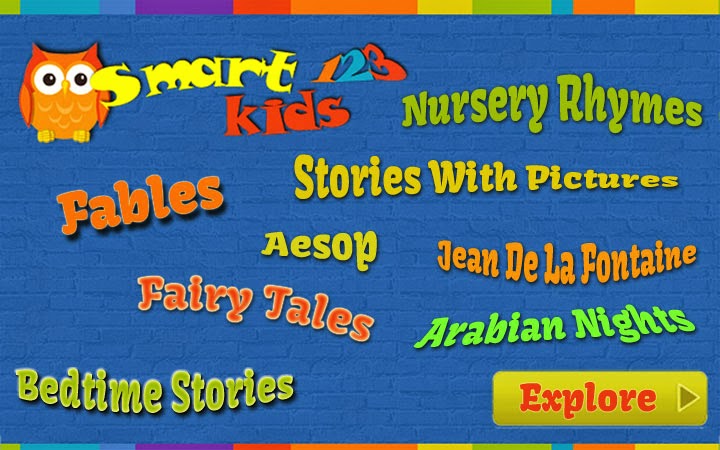
Choriocarcinoma – What is Choriocarcinoma
Choriocarcinoma symptoms
Water flea


What are human bones made of
These cells are also always rebuilding the bony tissue to keep it strong.
Rebuilding happens less as people grow older. So a broken bone will often heal much more quickly in a child than in an adult.
Bones store substances called minerals, which your body uses. Calcium is a mineral. It helps to make the bones hard.
Bones have a strong covering, called periosteum.
Inside, there is a hard layer of compact bone.
A long bone, such as the thigh bone, has spongy tissue at its ends, called cancellous bone, and soft marrow in its hollow center.
 |
| Some parts of your skeleton, such as your arms and legs, have only a few long bones. Other parts, such as your hands and feet, have many small bones. |
How are bones held together?
Your bones are held together by strong, flexible straps called ligaments.The ends of the bones are covered with a smooth, rubbery substance called cartilage. This is the same kind of substance that forms the tip of your nose.
Cartilage works like a cushion so that the bones don’t grind against each other. Cartilage is covered in a liquid called synovial fluid.
This keeps the bones moving smoothly, like oil in the parts of a machine.
3 SPECIFIC CELLS COMBO BEHIND BREAST CANCER SPREAD CONFIRM SCIENTISTS
 |
| Breast Cancer Cells |
Cephalopod Photography Lawrence Tulissi
First on the list is Lawrence Tulissi. All of the photos in this post are click-through-able if you want a larger image - which I highly recommend - and are his property (so dont steal them.)
First is an octopus (looks like it could be O. cyanea to me, but Im not the best at species identification) in a neat posture, with a very striking pattern of coloration. This was taken at Truk Lagoon, which sounds like an incredible place to dive.

This next one shows the suckers of a giant Pacific octopus. I like that you can see suckers in various states of contraction, showing the great flexibility that having multiple sets of muscles in each sucker affords the octopus.

This next one is of O. briareus, the Caribbean reef octopus, showing off its long arms and exhibiting some great body patterning. This posture is probably defensive, judging by how conspicuous its coloration is and the fact that the interbrachial web is spread.

This picture shows the eye of a giant Pacific octopus. The description of the photo says that the octopus was in its den, and the closed pupil slit indicates that it was likely resting. In a neat case of functional homology, octopuses, like many vertebrates, tend to close their eyes when they rest - its just that, since they have no eyelids, they do this by closing their pupils. If you dont believe me check out Brain and behavioural evidence for rest-activity cycles in Octopus vulgaris by Brown et al. (2006).

Moving on from octopuses (as much as it pains me), well finish up with two wonderful shots of Carribean reef squid, Sepioteuthis sepioidea:


Thanks for the photos, Lawrence!
Everybody else, thanks for reading. Ill be writing on some brand-spanking-new research on the role of serotonin in the octopus learning system next week, so Ill see you then!
Human Eye How does the human eye work

VALLAM
It is used to keep or carry very light weight items like grass, fodder etc. Normally those who domesticate cows keep vallum to give grass to cows. Grass is also collected in vallam. Rather than giving loosely giving in a container.
Vallam is considered as a measure of grass fed to cows. For calves there will be small vallams. Fodder will not be lost. Probably the cows may also feel it as a measure for consuming.
On those days grass was collected by house holds together from the compound and filled in the vallam. Sugar cane leaves, plantain cut leaves were all offered in vallam making it as a measure.
Vallam is also used for keeping and collecting flowers. Normally variar family may keep vallam to store flowers for different occasions.. Thin bamboo braided baskets some what similar to vallam differed in appearance- Basket used to be conical with less circumference at bottom. They were strengthier and used to distribute pappadam in feasts. On those days mud pots were carried in such baskets.
There is a place by name vallam in Tamilnadu in Tanjavur district. A number of Engineering colleges are there.
There is a place by name Tiruvallam near Trivandrum is famous for the Parasurama temple and for vavubali.
Vallam can be seen in villages still keeping flowers during onam season and in houses where cow housing (Erutthu) is there
Tuesday, March 17, 2015
Animals Riding Bikes

During the time he owned the shop, I started collecting picture books that featured animals riding bikes. Here are a few of my favorites.





Cinderella Smith

Luckily, this Cinderella, unlike her fairy-tale namesake, has plenty of pluck, and doesnt require a fairy godmother to solve her problems. Instead she teams up with the new girl in school, Erin, who has her own worries. Her mother is remarrying and shes getting two stepsisters. Will they be mean or nice? Cinderella is all set to help her new friend find out.
First-time author Stephanie Barden successfully juggles both plot lines, putting her young heroine into one scrape after another. Diane Goodes wriggly line drawings capture Cinderellas bouncy, exuberant personality to a tee. A second book, Cinderella Smith and the More the Merrier, will come out next year. Yippee!
Cinderella Smith
by Stephanie Barden
illustrations by Diane Goode
HarperCollins, 160 pages
Published: 2011
Top Ten Tuesday Spring 2013 Books TBR

So many spring releases to choose from, so little time. Here are ten childrens books Im dying to get my hands on. Check out other peoples lists on The Broke and the Bookish blog.
Doll Bones by Holly Black
This middle grade novel sounds creepy and fun--right up my alley. Pub date: May 2013
Bink & Gollie: Best Friends Forever by Kate DiCamillo and Alison McGhee
BFF Bink and Gollie are always up to something in this amusing beginning reader series. Pub date: April 2013
Dodsworth in Tokyo by Tim Egan
Loved Dodsworth and his ducks tours of Rome and London so Im betting Tokyo will be a blast. Pub date: April 2013
Maggot Moon by Sally Gardner
This dystopic novel from the U.K. has garnered a lot of buzz. I snagged a copy from my library and Im all set to read. Pub date: February 2013
Penny and Her Marble by Kevin Henkes
The latest from a great beginning reader series by a master craftsman. Pub date: March 2013
Definitely No Ducks by Meg McKinlay
I was charmed by McKinlays first chapter book about a girl and her pet duck. Im glad to see theyre back and quacking. Pub date: March 2013
Timmy Failure: Mistakes Were Made by Stephan Pastis
Timmy is an eleven-year-old detective and his partner is a polar bear in this comic middle-grade novel. What more do you need? Pub date: February 2013
Clementine and the Spring Trip by Sara Pennypacker
Ah, Clementine. I missed you. Pub date: March 2013
Pug and Other Animal Poems by Valerie Worth
Poetry and pugs! Woo-hoo! Pub date: March 2013
That is NOT a Good Idea! by Mo Willems
An interactive picture book by the one and only Mo Willems. Cant wait. Pub date: April 2013
Addendum
I dont just read childrens books, of course. Two adult books for Im super psyched to read are: Life After Life by Kate Atkinson and The Burgess Boys by Elizabeth Strout.
Now whats on your Spring TBR list?
Human ear
The ear is the organ that detects sound.
It not only receives sound, but also aids in balance and body position.
 The ear is part of the auditory system.
The ear is part of the auditory system.It has external, middle, and inner portions.
The outer ear is called the pinna and is made of ridged cartilage covered by skin.
Sound funnels through the pinna into the external auditory canal, a short tube
that ends at the eardrum (tympanic membrane).

Human Ear:
The human ear has three main sections, which consist of the outer ear, the middle ear, and the inner ear.
Sound waves enter your outer ear and travel through your ear canal to the middle ear.
The ear canal channels the waves to your eardrum, a thin, sensitive membrane stretched tightly over the entrance to your middle ear.
The waves cause your eardrum to vibrate.
The human ear can respond to minute pressure variations in the air if they are in the audible frequency range, roughly 20 Hz - 20 kHz.
It is capable of detecting pressure variations of less than one billionth of atmospheric pressure.
The threshold of hearing corresponds to air vibrations on the order of a tenth of an atomic diameter.
This incredible sensitivity is enhanced by an effective amplification of the sound signal by the outer and middle ear structures.
Contributing to the wide dynamic range of human hearing are protective mechanisms that reduce the ears response to very loud sounds.
Sound intensities over this wide range are usually expressed in decibels.
It passes these vibrations on to the hammer, one of three tiny bones in your ear.
The hammer vibrating causes the anvil, the small bone touching the hammer, to vibrate. The anvil passes these vibrations to the stirrup, another small bone which touches the anvil.
From the stirrup, the vibrations pass into the inner ear.
The stirrup touches a liquid filled sack and the vibrations travel into the cochlea, which is shaped like a shell.
Inside the cochlea, there are hundreds of special cells attached to nerve fibers, which can transmit information to the brain. The brain processes the information from the ear and lets us distinguish between different types of sounds.
The human ear can perceive frequencies from 16 cycles per second, which is a very deep bass, to 28,000 cycles per second, which is a very high pitch.
Bats and dolphins can detect frequencies higher than 100,000 cycles per second.
The human ear can detect pitch changes as small as 3 hundredths of one percent of the original frequency in some frequency ranges.
Some people have "perfect pitch", which is the ability to map a tone precisely on the musical scale without reference to an external standard.
It is estimated that less than one in ten thousand people have perfect pitch, but speakers of tonal languages like Vietnamese and Mandarin show remarkably precise absolute pitch in reading out lists of words because pitch is an essential feature in conveying
the meaning of words in tone languages.
The Eguchi Method teaches perfect pitch to children starting before they are 4 years old. After age 7, the ability to recognize notes does not improve much.
Anatomy and Physiology of the Heart Study Made Easy

HUMAN BODY SYSTEM DIAGRAM :
Anatomy and physiology study is normally broken down into 12 sections, with each section representing one system of the body, for example, the endocrine system. When you begin revising, it is recommended that you take 1 system of the body and learn it on its own. Various body systems are similar in nature so learning them together might cause confusion. Take each area of your anatomy and physiology study and write out concise notes on that area. To give you an example and for the purpose of this article I will give you a brief overview of the heart and its role in blood circulation.
Anatomy and Physiology of the Heart - Study Made Easy
The heart is a hollow muscular organ, approximately the size of its owners fist. It is positioned in the center of the chest area, between the lungs and is divided into 4 chambers. The upper chambers are called the atria and the lower chambers are called the ventricles. The right and left sides of the heart are divided by a muscular wall called the septum, this prevents deoxygenated and oxygenated blood from mixing together.
If you can imagine the pipe system in your house providing water and heat to you on a daily basis, metaphorically speaking, the house is your heart and the pipes are the blood vessels that are found throughout our bodies. Blood is pumped from the heart around all parts of the body through a complex transport system consisting of arteries, veins and capillaries (blood vessels). The heart beats approximately 100,000 times every day in order to supply our cells with oxygen rich blood and pumps about 2,000 gallons of blood through its chambers on a daily basis.
Blood circulation follows a specific route and can be summed up as follows;
1. The right atrium receives deoxygenated blood from the superior and inferior vena cava.
2. The blood is then pushed through the tricuspid valve down into the right ventricle. The tricuspid valve is a small flap that prevents the back flow of blood between the chambers on the right side.
3. Once the right ventricle fills up, the blood is then propelled into the pulmonary artery which then travels to the lungs where gaseous exchange occurs.
4. When the lungs remove the carbon dioxide, the deoxygenated blood becomes oxygenated and returns back to the heart via four pulmonary veins.
5. The blood enters the left atria via these pulmonary veins and is then pushed down into the left ventricle through the bicuspid valve. The bicuspid valve prevents the back flow of blood on the left side.
6. Once the left ventricle fills up it contracts, forcing the blood into the aorta which then branches to become the ascending aorta which supplies the upper body with oxygen rich blood and the descending aorta which supplies the lower body with oxygen rich blood.
7. Blood becomes deoxygenated once again and returns to the superior and inferior vena cava where the process begins again.
As I mentioned above, this just gives you a brief overview of the heart, its function and how it transports blood around the body. When you are carrying out any anatomy and physiology study, always make sure to summarize all areas as above. Using visual tools such as diagrams is a great way to spice up your notes. Even if you cant draw like picasso, it doesnt matter. To illustrate the heart you can draw a square shape or a circle and divide it equally into 4 chambers. It just gives you an idea of the layout of the heart and it has been proven that learning visually can be much more effective than just reading something over and over again.
width="300" height="250" border="0">
Otto The Autobiography of a Teddy Bear

--Maurice Sendak
"He never lost the feeling of how a child sees the world. And a childs view is not really sentimental."
--Burton Pike, professor of comparative literature at CUNY
"The most famous childrens book author you have never heard of."
--Phaidon Press
Who do the above quotes refer to? None other than Tomi Ungerer, one of my all-time favorite authors. I was an Ungerer fan as a child, poring over my tattered copies of The Three Robbers and Emile again and again. As an adult I came across The Beast of Monsieur Racine and fell in love with this exuberant story about a retired tax collector whose life is changed forever when he finds two young friends where he least expected. Read the book. Its one of my top 10 favorite picture books.
Many of Ungerers books are now out of print. (One reason he fell out of favor here was his not-so-secret hobby of erotica.) Luckily, Phaidon Press is in the process of reprinting 26 of his titles. The latest is Otto: The Autobiography of a Teddy Bear. Originally published in German in 1999, the picture book tackles a disturbing subject, World War II. Like all of Ungerers work, the book doesnt shy away from the gory realities of war and what happens to soldiers and to civilians, children included.
Otto, the teddy bear of the title, tells the story of his life, beginning with his creation in a toy workshop in Germany in the 1930s. Not one to shun unpleasant truths, Otto admits that being stitched together "was quite painful." Given as a birthday present to David, a young Jewish boy, Otto spends blissful day playing with the boy and his best friend, Oskar, who is not Jewish. Then things begin to change. David must wear a yellow star on his jacket. Next he and his family are taken away. In a moving illustration, David hands over Otto to Oskar for safekeeping. Interestingly, Oskar is the one who looks upset and is crying, not David.
During wartime, Oskars building is bombed and Otto is sent flying. Again, the illustration of the carnage, with the bodies of dead soldiers, is unsparing. Hes picked up by an American soldier, thereby saving the soldiers life when a bullet hits them both. (Quibble: Could a stuffed teddy bear be enough of a buffer?) The soldier takes Otto home and gives him to his daughter. Loved again, Otto enjoys being pampered until hes snatched from the girls arms by "three nasty boys" and finally ends up in a trash can. An old woman rescues him and bring him to an antique shop, where he stays in the window for many years. One rainy night, an old man spots him. Yes, dear reader, its David, the original owner, who survived the war (although his parents didnt). David takes him home, and the story is written up in the newspaper, which leads to Oskar (another survivor) contacting David, and the three friends are reunited.
Despite the involved plot, the text for Otto is relatively straightforward, although there are a few vocabulary words to chew on, such as "indelible," "charred rubble," and "mascot." Would a Level 3 reader be able to get through the book by herself. Yes. Should she? No. A trusted adults presence is strongly recommended, as a child is bound to have many questions. The illustrations, as with all of Ungerers work, are amazing. Done in soft watercolors, they can be playful (as when David and Oskar dress Otto as a ghost and dangle him in front of a neighbors window), touching (Oskar saying goodbye to his father as he heads off to war), and graphic (the wounded American soldier clutching Otto to his chest to staunch the flow of blood). Even Ottos expression subtly change each time he undergoes another reversal of fortune. I highly recommend this book, and Im looking forward to seeing more of Tomi Ungerers work reissued by Phaidon.
Otto: The Autobiography of a Teddy Bear
by Tomi Ungerer
Phaidon Press, 36 pages
Published: September, 2010
ECHINODERMS
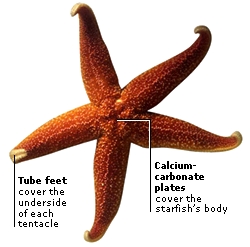
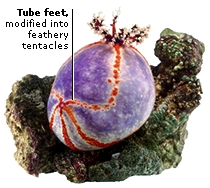
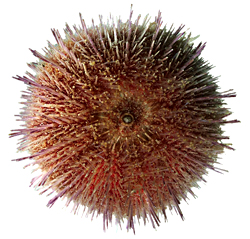
PHYLUM: ECHINODERMATA
Class: Asteroidea
Features: central mouth on underside, surrounded by arms (usually five)
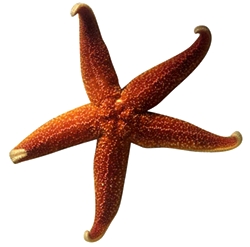
Class: Echinoidea
Features: spherical skeleton covered in spines

Class: Crinoidea
Features: mouth faces upwards, feed on plankton
Class: Holothuroidea
Features: sausage-like body with tentacles around mouth

Er Diagram Tool
Images gallery of er diagram tool
Free ER Diagram Tool Lucidchart

UML diagram; Android mockup; iPhone mockup; Business process; Org chart; Network diagram; Site map; Venn diagram; About; Team; Press; Terms; Privacy; Contact
ER Model solution helps create complex database models

The Schema Compare Tool functionality within the ER Modeler allows comparing ER Models. An ER diagram can be extracted from an existing database
ER diagram drawing tools download Database design modeling

Download Toad™ Data Modeler - entity relationship software. Features include: ER Diagrams (ERD), Data Flow Diagrams (DFD), Reverse Engineering (RE), SQL script
Database Entity Relationship Diagrams Altova XML Editor

You can select any connecting line in your ER diagram to automatically identify and highlight the related tables. More Database Tools: Multi-database SQL editor;
Entity–relationship model

Attributes are often omitted as they can clutter up a diagram; A freeware ER tool that can generate database and application layer code (webservices)
Entity Relationship Diagram Download SmartDraw FREE for easy

Create ERD diagrams, data flow models, SSADM, JSD, UML, and other software diagrams in minutes. Download Our Entity Relationship Diagram Software FREE!
Entity Relationship Diagram ERD Tools for Database Developers

An Entity Relationship Diagram (ERD) is a snapshot of data structures. You can use DeZign for Databases to draw ERDs or to generate ERDs from existing databases.
What is FREE ER DIAGRAM DRAWING TOOL?

What is FREE ER DIAGRAM DRAWING TOOL? Mr What will tell you the definition or meaning of What is FREE ER DIAGRAM DRAWING TOOL